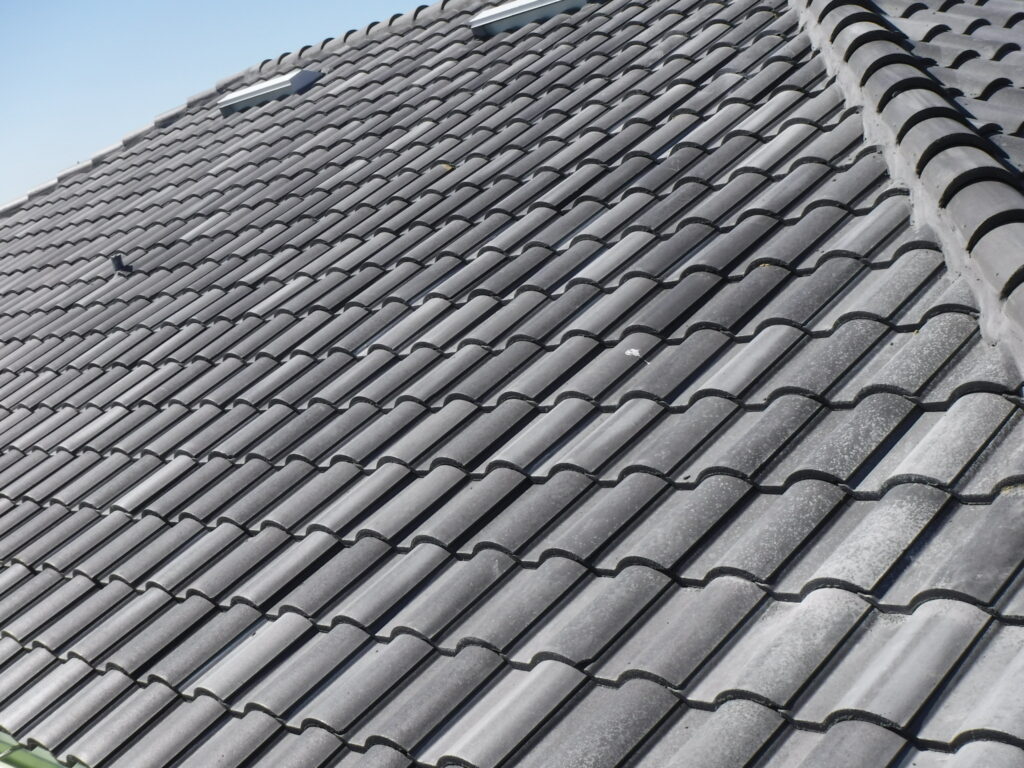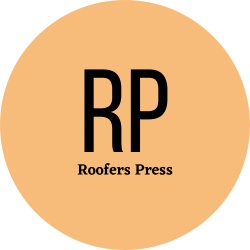The Most Durable and Strongest Material Ideal For Roofing
by siteadmin

When it comes to upgrading the exterior of your home, roofing materials are a big part of the equation. Each material has different characteristics that can add or detract from your home’s overall look.
Steel is the strongest material ideal for roofing and can withstand heavy snowfall, hurricanes, and rainstorms. It also offers the best resistance to corrosion.
Steel
Steel is the most common metal used in roofing today. It is also one of the most durable and strongest materials ideal for this purpose. Its strength is due to a combination of its low density and high tensile strength, or the ability to hold its shape under a lot of pressure.
It is important to note that steel does not have a pure metallic makeup, which means it is actually classified as an alloy of different metals. It is most notably comprised of iron and carbon, although there are other elements added into the steel formula to achieve specific properties such as hardness and corrosion resistance.
This variation in steel’s chemical composition allows it to be divided into several categories based on their carbon content. Each of these types can have varying amounts of alloying elements added to it depending on what kind of end product it will be used for. These variations give the metals its distinct characteristics.
Stainless steel, for example, is a highly resistant material with excellent corrosion resistance and temperature resistance. It is commonly known for its durability and strength, which is why it is used in a variety of industrial applications as well as in home appliances such as cookware and cutlery.
Another variant of steel that is often used in roofing is galvalume, which combines three of the highest-performing metals found in today’s industry: aluminum, zinc, and steel. It is manufactured starting with a cold-rolled sheet of steel, which is then hot-dipped repeatedly with aluminum and zinc alloys. Each successive coating adds more and more aluminum and zinc, until the final product reaches a total of 55% aluminum, 43.4% zinc, and 1.6% silicon.
The strength of steel and its versatility is what makes it such a popular roofing option for homeowners. It is strong enough to withstand extreme weather conditions, while still being lightweight and energy-efficient in the summer. However, a metal roof is not the best choice for people in mountainous areas, as it doesn’t offer much insulation to protect against snow and harsh winter winds.
Wood
Wood is a natural, versatile and inexpensive material that is ideal for a variety of roofing purposes. Its high load bearing capacity makes it resistant to earthquakes and different climate conditions. It also has a unique ability to remove greenhouse gases, which makes it energy-friendly. Furthermore, it is highly durable and can last for centuries if properly maintained. However, it is prone to warping and can be susceptible to insect infestations, mold, and rot. Nevertheless, it can be easily repaired and has a high aesthetic standard.
The sheathing process of roofs has evolved from simple wooden planks to more fabricated materials such as plywood and OSB. These fabricated materials are a lot stronger than traditional sheathing and provide better support for the shingles, shakes, and tiles. They are also cheaper than sheathing made of locally-sourced planks, but they have some drawbacks that should be taken into consideration when choosing them for your roofing project.
Plywood and OSB are manufactured from wood strands that are interleaved and glued together to create sheets of wood veneer. The type of sheathing you choose should depend on the size and rafter spacing of your roof. The correct sheathing thickness is crucial to ensuring that your roof will withstand the load that it will be subjected to.
In addition, both plywood and OSB are resistant to termites, wood borers, and wasp nests. However, they are not as resistant to fire as other materials. As a result, they are often not recommended for use in areas with heavy snowfall or strong winds.
There are many types of wood that can be used for roofing, including pine, cypress, cedar, and oak. Cedar and redwood are popular choices for their durability and resistance to pests. They are also relatively heavy, making them more wind resistant than lighter shingle and tile materials. However, they are not as durable as slate or concrete, and can be vulnerable to cracking from large hailstones. Additionally, they are less fire-resistant than other materials and may require more frequent treatments with fire retardants. They are also a poor choice for humid areas.
Slate
Slate is a fine-grained, foliated metamorphic rock that forms from original shale-type sedimentary rocks through low-grade regional metamorphism. It is a durable and aesthetically pleasing roofing material that has been used for thousands of years. It is usually grey in color, but it may also be black, red, purple, green, and blue. Its natural textured surface is a perfect complement to many types of architectural styles and colors.
It is a type of metamorphic rock that cleaves readily into thin slabs with great tensile strength and durability. The foliated nature of slate results from the pressure and temperature conditions under which it was formed. The parent material of slate typically consists of mudstone or shale, although basalt can sometimes be included in the composition. During the process of metamorphism, the clay minerals in the mudstone are transformed into micas and quartz. The resulting slaty structure allows the rock to split along planes of cleavage that may not correspond to the bedding planes of the original mudstone.
The slaty cleavage of slate is the result of intense compressive forces, which have the effect of splitting the rock along lines that do not parallel the bedding planes. This process is called foliation, and it makes the rock easy to split into thin sheets that can be used as roofing or floor tiles. It is popular for roof shingles, wall cladding, floor tiles, and stairways and pathways. It is also often used as decor in freshwater aquariums (although it can leach silicates that can lead to excess diatom growth in marine aquaria).
While shingles are an attractive and inexpensive roofing option, it is important to note that these roof materials only offer limited water resistance and do not prevent leaks from forming at seams. This is why it is important to consider other types of roofing materials that offer greater longevity, such as metal or slate.
Slate is one of the most durable roofing materials available, but it can be expensive to install and repair. It is also heavy, and many homes simply do not have the structural integrity to support a slate roof without extensive retrofitting. For homeowners who wish to achieve the look of a slate roof without the cost and installation hassles, we offer the top roofing port St Lucie FL and experienced repair services to help.
Rolled Roofing
Roll roofing is not the most aesthetically appealing option when it comes to roof coverings, but this material can be quite functional. It's inexpensive, easy to install, and works well on low-incline roofs. In addition, it's a great alternative for people who want a roof for their shed or workshop. However, it's not ideal for the main roof of a home because it's not durable enough to resist water leaks.
Rolled roofing is available in a variety of colors, thicknesses and lengths. Choosing the right type of roll roofing depends on the intended use of the roof and your budget. It's also important to make sure you have all the tools you need before starting the installation process. This includes a ladder, roofing cement, a paintbrush and a caulk gun. You'll also need a hammer and a nailer to attach the roofing materials. It's also important to clean the existing roof surface before you begin installing the new rolled roofing. This will prevent dirt and debris from getting under the new roofing material and causing leaks.
Once you're ready to begin, take a ruler and chalk line to mark out the area where you'll be working. Then, start removing the old roofing material and apply a thin coat of roofing cement to the surface. This will help the new rolled roofing stay in place. Once the first coat of cement dries, you can start laying the rolls of rolled roofing. Always follow the manufacturer's instructions when applying this roofing material.
There are several different types of rolled roofing, including asphalt shingles and mineral-surfaced rolled roofing. Asphalt shingles are the most popular choice for homeowners because they're affordable, attractive and durable. They also add value to a property and have a long lifespan. However, shingle roofs are not suitable for every building, and they require periodic maintenance.
While rolled roofing is not as attractive or durable as composite shingles, it's much cheaper and easier to install. This roofing material is also suitable for use in unoccupied structures, such as sheds and garages. However, this is not an ideal roofing material for occupied residences because it lacks durability and decreases a house's resale value.
When it comes to upgrading the exterior of your home, roofing materials are a big part of the equation. Each material has different characteristics that can add or detract from your home’s overall look. Steel is the strongest material ideal for roofing and can withstand heavy snowfall, hurricanes, and rainstorms. It also offers the best…
Recent Posts
- Roofing Companies Port Charlotte
- Roofing Company Savannah Sheds Light on the Lifespan of Roofs: How Long Should a Roof Last?
- New Orleans Concreters Advocates for Stamped Concrete Driveways as the Ultimate Choice for Durability and Style
- A. Parker Contracting Emerges as Premier Roofer in Delaware: Serving Newark and Wilmington Areas with Excellence
- New Orleans Concreters Advocates for Stamped Concrete Driveways as the Ultimate Choice for Durability and Style
